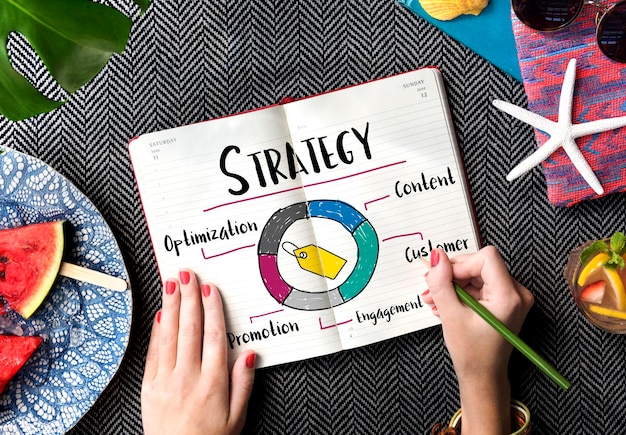Boost your property’s visibility with the cutting-edge innovation of digital real estate signage! In today’s dynamic market, these innovative displays are transforming the way properties have a good market, providing a comprehensive and engaging experience for potential buyers. Let’s delve into the realm of modern marketing strategies and explore how digital real estate signage can significantly impact your property’s exposure.
Modern Marketing Strategies: A Brief Overview
Modern marketing strategies are a set of digital practices that help engage customers, enhance brand awareness, and drive conversions. These strategies encompass SEO, social media marketing, content marketing, email marketing, and PPC advertising. Leveraging specific digital channels, businesses deliver personalized content, fostering strong relationships with their audience. Data analytics plays a pivotal role, providing insights into customer behaviours, preferences, and trends. These strategies are not only sustainable and cost-effective but also measurable, making them highly effective in today’s digital era.
Digital Real Estate Signage In Today’s Property Market
In the ever-evolving property market, digital real estate signage is a game-changer. Utilizing LED screens, interactive displays, and touchscreens, these platforms effectively market properties. Unlike traditional signage, digital displays showcase not only property details but also offer 3D walkthroughs, virtual tours, and insights into the surrounding neighbourhood. With smart technologies and AI, these signs tailor content based on user preferences, enhancing the overall customer experience. The shift to digital real estate signage is revolutionizing property marketing and sales strategies.
Understanding Digital Real Estate Signage
Definition: Digital real estate signage is a contemporary method of advertising property listings through electronic displays. These signs, utilizing LED or LCD technology, dynamically showcase properties available for sale, rent, or lease.
Featuring images, detailed information, and even property videos, these signs get real-time updation. It helps, providing an efficient tool for real estate agents.
Importance: Digital signage plays a crucial role in the property sector by offering dynamic displays that captivate potential clients’ interest. The ability to present engaging content can significantly influence a buyer’s decision-making process, providing visual presentations of a property’s key features. Furthermore, it streamlines the buying process by offering real-time information, enhancing efficiency and buyer satisfaction.
Role in Boosting Property Visibility: Digital signage enhances property visibility by using compelling visuals and interactive features. These displays effectively communicate key selling points, providing a comprehensive view of the property through high-quality images, maps, virtual tours, and videos. This makes digital signage a powerful marketing tool, stimulating buyer interest and engagement, and ultimately boosting property visibility.
Read Also: Instagram Advertising For Beginners
Features Of High-Quality Digital Real Estate Signage
Design and Aesthetic Enhancements: Incorporating design and aesthetic enhancements adds visual appeal and improves functionality. Upgrading structural elements, introducing complementary colours, and creating an appealing ambience can boost a brand’s image and attract more clients.
Technological Aspects: Touchscreens and multimedia have revolutionized interaction. Touchscreens offer an intuitive interface, while multimedia combines various content forms for dynamic communication, enhancing user experience.
Interactive Components: Interactive components, such as buttons and sliders, facilitate dynamic and user-friendly experiences, making technology more intuitive and enhancing user satisfaction.
Implementation Of Digital Real Estate Signage
Steps in Implementation: Implementing digital signage involves defining objectives, identifying target audiences, choosing appropriate hardware and software, creating engaging content, and effectively managing and updating displays. Successful implementation requires a blend of technological expertise, creativity, and strategic planning.
Factors to Consider: Factors such as product specifications, safety measures, cost implications, and expertise needed for installation must be considered. Careful planning ensures a successful and financially feasible installation process.
Digital Display Modes: Various digital display modes, including LED screens and touch screens, have revolutionized how we interact with technology. LED screens offer vibrant colours and energy efficiency, while touch screens provide an intuitive and direct interaction method
Benefits Of Utilizing Digital Real Estate Signage
Increased Visibility and Attractiveness: Improved visibility and attractiveness are pivotal for growth. Increased visibility helps clients easily identify and locate you, while heightened attractiveness draws people towards your brand or product.
Greater Property Exposure: Greater property exposure increases the chances of selling a property by showcasing it to a larger pool of potential buyers. Enhanced exposure also contributes to fair pricing and increased competition among prospective buyers.
Detailed and Changeable Information Display: A detailed and changeable information display provides enhanced user convenience, promoting effective communication. Swift adaptability ensures the most relevant details are consistently highlighted.
Increased Engagement for Potential Buyers: Increased engagement is critical for business growth. Creating interactive communication and building relationships through personalized marketing and quality customer service can transform engagement into actual sales.
Future Trends In Digital Real Estate Signage
Prediction of Coming Trends: Predicting trends involves utilizing techniques like data analysis, behavioural statistics, and market research. While perfect prediction is impossible, anticipating possible changes provides businesses with a competitive edge.
Technological Advancements: Future technological advancements, including digital platforms, AI, and virtual reality, are expected to influence the property market significantly. These advancements promise universal accessibility, personalized suggestions, and immersive virtual tours, transforming the buyer’s experience.
In conclusion, digital real estate signage is a modern marketing strategy that effectively enhances property visibility, engagement, and overall marketing efficiency. As technology continues to evolve, businesses must adapt to stay ahead in the competitive real estate landscape. Embracing the benefits of digital signage ensures a comprehensive and engaging approach to marketing properties in the digital era.
Read Also:

























